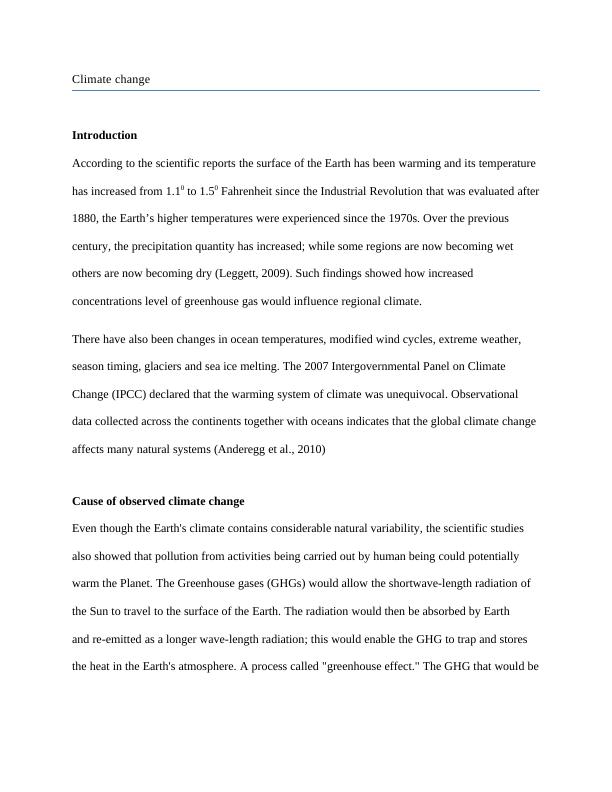Climate Change | Environmental Problem, Policy And Current Issue
5 Pages1110 Words13 Views
Added on 2022-08-20
Climate Change | Environmental Problem, Policy And Current Issue
Added on 2022-08-20
ShareRelated Documents
End of preview
Want to access all the pages? Upload your documents or become a member.
Role of Antarctic Surface Height
|9
|1592
|16
Impact of Human Activities on Climate Change
|9
|2529
|262
49004 Systems Engineering for Managers
|9
|2082
|49
Impact of Global Warming on Marine Life
|4
|1387
|101
Case Study about Sociology 2022
|5
|1177
|31
Geography: Understanding Sustainability, Global Warming, Climate Change, Pollution, and Environmental Agreements
|5
|1502
|353


